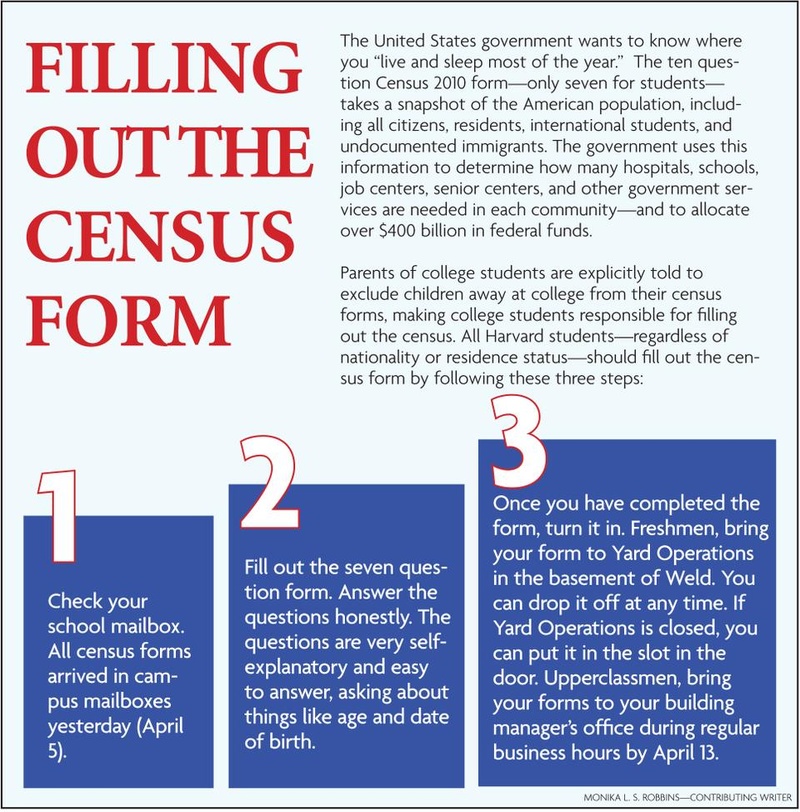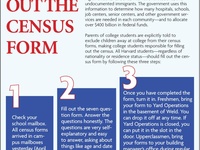The 2010 Census will reveal more about the country’s diversity in terms of ethnicity and sexual orientation than any previous count, and will reflect population movement resulting from the recent economic downturn, Harvard professors who study population, ethnicity, and public health predict.
This year’s census will provide new information in part because of changes to the survey. For instance, this year for the first time respondents may report being married to a same-sex partner; in prior censuses, these statistics were “corrected” by forcing one member of the pair to identify as male and the other as female, according to Nancy Krieger, a professor of society, human development, and health at the Harvard School of Public Health. This census may therefore provide the most accurate count to date of how many same sex couples there are in the U.S., she said.
Data compiled from the 2010 census is also likely to show a dramatic increase in the number of people identifying with multiple races, according to Professor of Government and African and African American Studies Jennifer Hochschild. This, along with increasing immigration and high birthrates among ethnic minorities, will result in a proportional decrease in the number of people identifying themselves as “white,” Hochschild said.
Respondents have been able to select multiple ethnicities since the 2000 census, but Hochschild said she expects more people will take advantage of the change this year.
“The idea is much more familiar to people now and it’s much less politically fraught—partly because people are more used to it, and partly because there are new rules for reallocating people back to a given race,” Hochschild said.
The census may also show significant age-dependent demographic differences within ethnic groups, according to John D. Della Volpe, director of polling at the Institute of Politics, whose research indicates that income and average age differ notably between first and second generation immigrants.
In particular, he said that first generation Hispanics have significantly lower incomes and have children earlier in life than do second generation Hispanics, and that this generation gap should affect how their opinions are interpreted.
“Being Hispanic is not a good predictor of things like political leaning and levels of economic success. Better predictors are things like languages spoken and generation,” Della Volpe said.
Additionally, Hochschild and Della Volpe both said they think that the 2010 census will reveal some of the far-reaching societal effects of the recent economic recession. Della Volpe said that population booms in places like Arizona and Las Vegas, which had been spurred by economic growth, will reverse. Widespread unemployment may cause a drastic decrease in population in industrial cities, he said.
Meanwhile, some trends are likely to continue from earlier years. In particular, Professor of Sociology Peter V. Marsden said that both the average age of the U.S. population and the rate of immigration into the country may continue increasing.
Age distribution patterns within ethnic groups are likely to continue as well, such as the existing trend that the Hispanic population tends to be the youngest on average, while the white population tends to be the oldest, Hochschild said. Underlying social factors, such as the average age of immigrants and high birthrates, serve to perpetuate these patterns.
The information gathered in this census will be used to allocate political representation in Congress, apportion federal funds and levy taxes according to population.
Read more in News
UC Votes to Reform Online ElectionsRecommended Articles
-
Giuliani, Obama Top IOP Youth PollDemocratic Senator Barack Obama and former New York City Republican mayor Rudolph Giuliani lead as the presidential nominees for their
-
IOP Polls Show Drop In Obama ApprovalExit polls from the 2008 presidential election placed support for Barack Obama at 66 percent from the 18-29 year old demographic. However, a new national poll conducted by the Harvard Institute of Politics shows that his initial popularity with the younger generation may have dwindled since he began his term.
-
IOP Poll Results ReleasedPoll results released yesterday by the Institute of Politics revealed that President Obama’s approval rating among young adults now stands at 55 percent, after over a year of falling approval ratings.
-
Poll: Young Voters' Approval of Obama LowPresident Barack Obama’s approval rating among 18- to 29-year-olds has dropped to an all-time low of 46 percent, according to a study by the Institute of Politics released Thursday.
-
IOP Poll on Young Adults Indicates Waning Approval for ObamaThe majority of young adults disapprove of current healthcare reform efforts and their approval rating of President Barack Obama is at its lowest point since 2009, according to Institute of Politics poll results that were released Wednesday.















